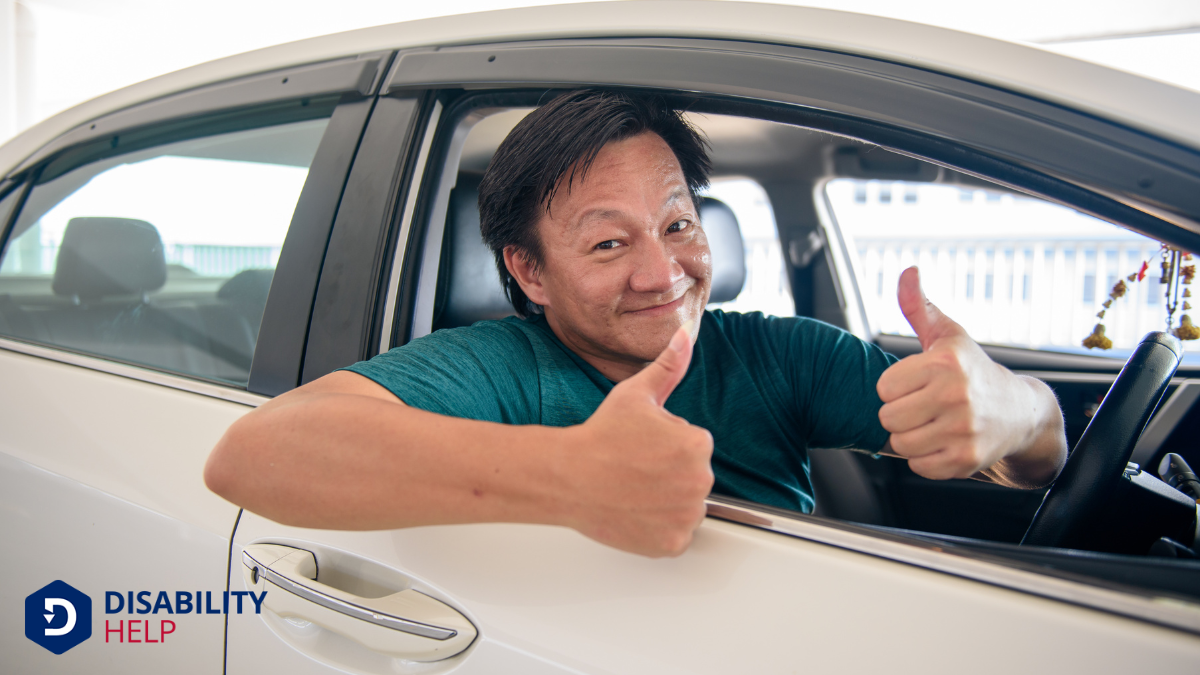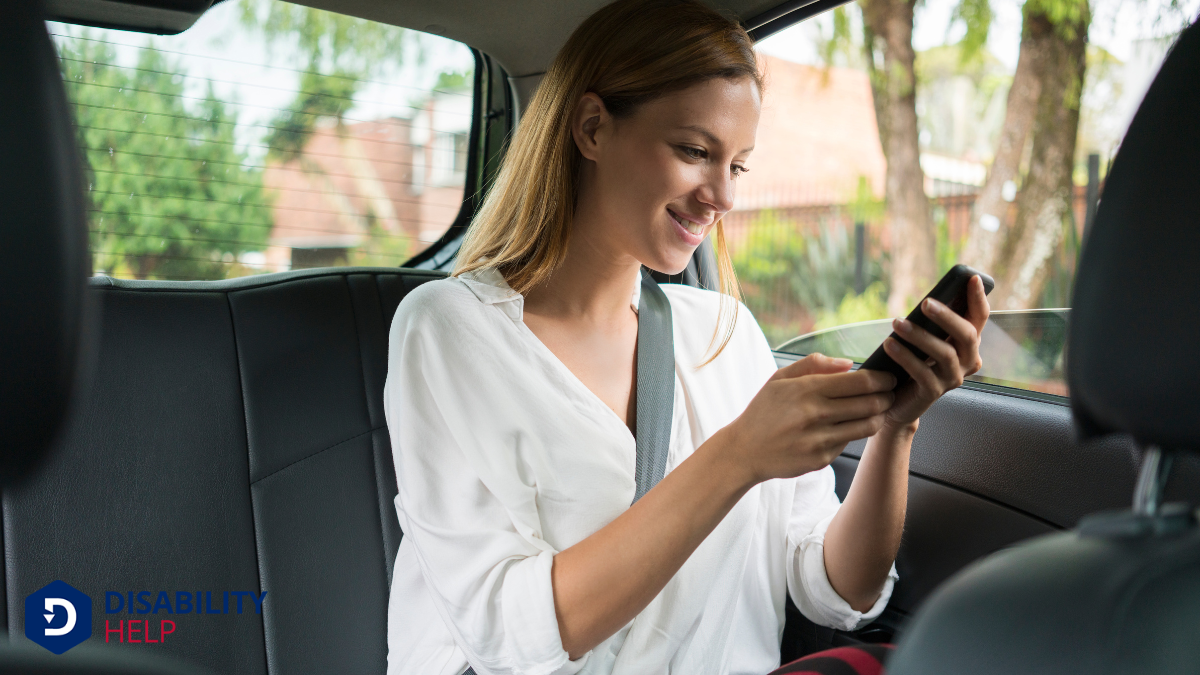As ride-sharing services become a staple in our daily lives, it's essential to evaluate their accessibilityThe design of products, devices, services, or environments to be usable by people with disabilities.... for everyone, including disabled riders. Uber has taken significant steps to address this need by implementing programs designed specifically for individuals with disabilities. These initiatives include accessible ride options and partnerships with accessibility organizations. But are these efforts sufficient, and how do they truly impact riders with disabilities? Let's explore this further.
Key Takeaways
- Uber provides wheelchair-accessible vehicles (WAVs) to accommodate disabled riders' mobility needs.
- Driver training programs focus on effective assistance for riders with disabilities, emphasizing sensitivity and communication.
- Partnerships with accessibility organizations help Uber refine services to better serve disabled riders.
- Uber integrates assistive technologies to enhance the riding experience for individuals with disabilities.
- Continuous feedback from disabled riders informs Uber's service improvements and accessibility features.
Overview of Accessibility in Ride-Sharing Services
When it comes to ride-sharing services, accessibility is an essential factor that guarantees everyone, regardless of their physical abilities, can benefit from these modern conveniences.
We all understand the significance of having transportation options that cater to diverse needs. It's crucial for ride-sharing companies to provide solutions that guarantee equitable access for disabled riders.
In our collective pursuit of understanding, we recognize that these services must adaptA grassroots disability rights organization in the U.S. that focuses on promoting community-based se... to accommodate various accessibility requirements. This includes features like wheelchair-friendly vehicles and apps with assistive technologies.
We must consider how ride-sharing platforms can integrate features that enhance ease of use for everyone.
Understanding Uber's Commitment to Inclusivity

As we explore Uber's commitment to inclusivity, let's focus on their accessible ride options and driver training initiatives.
Uber aims to provide reliable transportation for everyone, including those with disabilities, by offering vehicles equipped to meet diverse needs.
Additionally, their driver training programs guarantee that drivers are prepared to assist and accommodate all riders effectively.
Accessible Ride Options
Although many transportation services have been slow to address the needs of disabled riders, Uber's commitment to inclusivity stands out through their accessible ride options.
We can utilize Uber's WAV (Wheelchair Accessible Vehicle) feature, specifically designed to accommodate riders who use wheelchairs or mobility aidsDevices designed to help individuals move around more easily, such as canes, walkers, or wheelchairs.... This option guarantees that riders have the necessary space and equipment for a comfortable journey.
Moreover, Uber has partnered with third-party providers to offer more vehicles that meet accessibility standards. We can also schedule rides ahead of time, allowing us to plan outings without stress.
In addition, the app's user-friendly design makes it easy for riders and caregivers to book rides quickly. By focusing on accessibility, Uber demonstrates a dedication to breaking down transportation barriers for everyone.
Driver Training Initiatives
To guarantee our drivers are well-equipped to serve disabled riders, Uber invests in extensive training initiatives. We recognize the importance of inclusivity and aim to confirm everyone has a seamless experience.
Our training focuses on key areas, enhancing our drivers' ability to cater to diverse needs. Here's how we're making a difference:
- EmpathyThe ability to understand and share the feelings of another, particularly important in understanding... and Awareness Workshops: These sessions help drivers understand the unique challenges disabled riders face.
- Vehicle Accessibility Training: Drivers learn the best practices for accommodating wheelchairs and other mobility aids.
- Effective Communication Skills: Training on clear and respectful interaction ensures riders feel heard and valued.
- Emergency Protocols: Drivers receive guidance on how to handle various situations, prioritizing rider safety.
Through these initiatives, we're committed to fostering a supportive environment for all.
Exploring Uber's Accessibility Features
Let's explore how Uber is enhancing access for everyone by incorporating key features like wheelchair-accessible vehicles and assistive technology integration.
These tools are complemented by driver sensitivity training, ensuring that riders with disabilities receive respectful and effective service.
Together, these initiatives demonstrate Uber's commitment to making transportation inclusive.
Wheelchair-Accessible Vehicles
When it comes to providing accessible transportation solutions, Uber's commitment to inclusivity shines through its offering of wheelchair-accessible vehicles (WAVs).
These specially equipped vehicles guarantee that riders with mobility challenges can travel comfortably and safely. We can appreciate how Uber's WAVs are designed with the rider in mind, emphasizing ease of access and reliability.
Here's what makes WAVs a valuable option for those needing this service:
- Trained Drivers: Drivers receive specific training to assist riders with disabilities effectively.
- Ample Space: Vehicles are equipped to accommodate wheelchairs, offering spacious interiors.
- Easy Booking: Riders can easily request a WAV through the Uber app, just like any other ride.
- Availability: WAVs are increasingly available in many cities, making accessible travel more feasible.
Uber's WAVs reflect a significant step toward inclusive mobility, addressing diverse needs in our communities.
Assistive Technology Integration
In addition to wheelchair-accessible vehicles, Uber's commitment to accessibility extends to the integration of assistive technology. Our goal is to make every ride as smooth as possible for everyone, including those with disabilities.
With features like voice commands and screen readers, the Uber app is designed to be user-friendly for visually impaired riders. We've also included real-time text-to-speech updates, which provide timely information about ride status and driver details.
For those with hearing impairments, visual alerts and in-app messaging guarantee that communication with drivers is clear and effective. By incorporating these technologies, we're trying to eliminate barriers and enhance the riding experience for all users.
Let's continue exploring how these technologies can create a more inclusive service.
Driver Sensitivity Training
Driver sensitivity training is a crucial element in enhancing Uber's accessibility features. By focusing on this training, we're ensuring drivers understand and effectively assist disabled riders, contributing to a more inclusive service.
Training sessions cover various aspects that help drivers provide a supportive experience.
- Empathy Development: Encouraging drivers to understand challenges faced by disabled riders.
- Communication Skills: Teaching how to engage respectfully and with clarity.
- Assistance Techniques: Demonstrating practical methods for aiding riders with different needs.
- Awareness of Tools: Familiarizing drivers with assistive technologies and how to use them.
Analyzing Uber's Partnerships With Accessibility Organizations
Although Uber has made strides in improving accessibility, one of their most significant advancements comes from partnering with various accessibility organizations.
These collaborations help us understand the unique challenges faced by disabled riders and refine our services to meet their needs. By working closely with groups like the National Federation of the Blind and the National Association of the Deaf, Uber gains valuable insights and guidance to enhance accessibility features.
These partnerships guarantee that our technology remains inclusive and user-friendly. Additionally, engaging with these organizations allows us to develop and implement more effective policies that can improve the transportation experience for disabled individuals.
Together, we build a more accessible service, demonstrating our commitment to inclusivity and continuous improvement in serving all riders.
Feedback From Disabled Riders on Uber's Services

Building on our partnerships with accessibility organizations, we place immense value on the firsthand feedback from disabled riders regarding our services. Their insights guide our efforts to improve and innovate.
Disabled riders have shared both positive experiences and areas needing attention. Here are some key points from their feedback:
- Driver Awareness: Many riders appreciate when drivers show understanding and patience during pickups and drop-offs.
- App Accessibility: The app's ease of use and clear navigation are vital, yet some riders find specific features challenging.
- Vehicle Availability: The availability of accessible vehicles remains a significant concern for many.
- Communication: Clear and effective communication between riders and drivers is often cited as enhancing the overall experience.
Future Directions for Accessibility in Ride-Sharing Platforms
As we look to the future of accessibility in ride-sharing platforms, it's vital to focus on integrating advanced technologies and design improvements that cater to the diverse needs of all riders.
We must prioritize developing intuitive apps that offer customizable features for those with visual or hearing impairments. Enhanced GPS accuracy can assist drivers in locating accessible pick-up points efficiently.
Encouraging partnerships with vehicle manufacturers to produce more accessible vehicles will also be beneficial. Training programs for drivers on disability awareness are important too, ensuring they understand and meet riders' needs.
Conclusion
In conclusion, we've explored how Uber is dedicated to making transportation accessible for everyone, including disabled riders. Through specialized programs, wheelchair-accessible vehicles, and partnerships with accessibility organizations, Uber shows its commitment to inclusivity. Feedback from disabled riders helps Uber improve and adapt its services, ensuring reliability and sensitivity. As we look to the future, we anticipate even more advancements in accessibility across ride-sharing platforms, ensuring that all riders' needs are met with care and respect.






